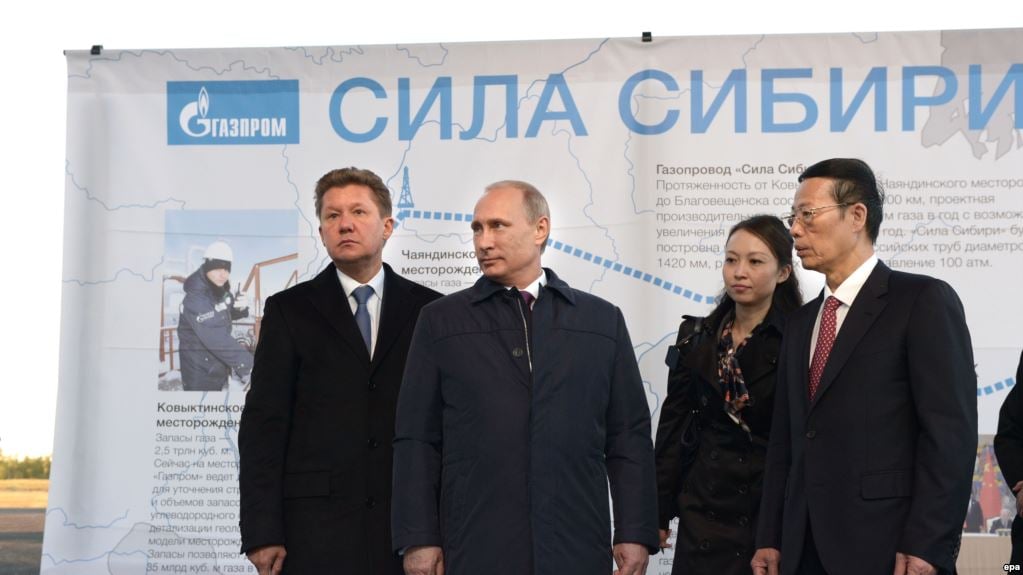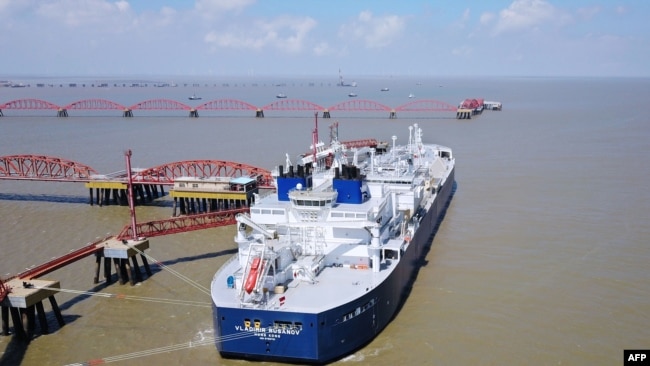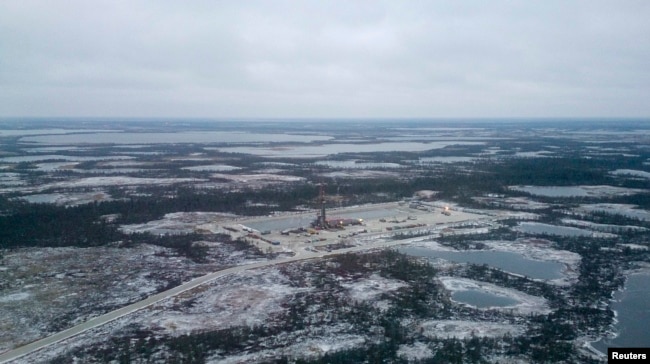
By Polygraph
“Miller emphasized that Gazprom is discussing with China an increase in [gas] deliveries via the Power of Siberia [pipeline] using only its own capacities. ‘We can ourselves can [do it]. This is Gazprom’s production capacity,” he said… ‘In the future, after [we succeed in supplying] the 30 billion [cubic meters a year], we can talk about an increase, but at this moment we are talking about 30 billion cubic meters’.”
MISLEADING
Miller’s comments come amid major expenditures for construction of a gas pipeline that cannot meet the promised supply volumes.
Speaking to reporters in St. Petersburg in early October, Gazprom CEO Alexei Miller announced an effort to sell additional natural gas to China. He was referring to a $400 billion deal Russia and China signed in 2014, under which Russia promised to supply China with 38 billion cubic meters of gas annually within 30 years beginning 2019. The contract between Gazprom and China National Petroleum Corporation was signed in the presence of the two country’s leaders, Xi Jinping and Vladimir Putin, during the Russian president’s trip to Beijing.
Speaking at the Russian energy summit in St. Petersburg, October 4, 2018 Alexei Miller assured the public that the company could fulfill its contract and deliver the promised gas supply to China.
Miller said that on the top of supplying China with 38 billion cubic meters of natural gas a year, Gazprom could deliver an additional supply of up to 10 billion cubic meters to China’s distribution network during peak season in the wintertime.
Despite Miller’s promises, Gazprom will not be able to start delivering the full volume by the contract deadline, industry insiders told Polygraph.info.
The deliveries promised in the deal depend on supplies from two natural gas deposits located in Siberia – the Chayanda oil and gas condensate field in Yakutia and the Kovykta gas condensate field in the Irkutsk Region. The two together have natural gas reserves of 4.1 trillion cubic meters, but neither has yet been developed.
Meanwhile, according to Gazprom, the Power of Siberia pipeline is in its last phase of construction, with over 91 percent of the work done.
Pavel Kartashov, a Moscow-based expert in the Russian energy industry, told Polygraph.info that Miller’s statement can be viewed as “a propaganda spin to justify the $70 billion price tag the state has splurged on” for construction of a pipeline to China. “Usually, the costs for similar state funded projects always overstretch the initial price tag,” he said.
The 2,150 kilometer-long Power of Siberia pipeline is expected to be ready by the end of 2019 and, according to experts from Sberbank, Russia’s largest state bank, the cost of building it can be recouped only if the price for oil is stabilized at $110 per barrel.
“We haven’t seen such high oil prices since 2014. Furthermore, if oil prices really return to $110 per barrel, it would be favorable for China to curtail the gas supplies from Russia and buy natural gas from Central Asia or liquefied natural gas which is transported on tankers by sea,” wrote Alexey Navalny, the Russian anti-corruption activist and opposition leader, in a June 2018 blog post.
Pavel Kartashov, a manager at RPI, a Moscow-based consultancy, told Polygraph.info that Gazprom’s production volumes are down, along with the company’s operating efficiency, so it is “unrealistic” to say at this moment that it can supply 38 billion cubic meters of natural gas to China annually.
Industry insiders say Gazprom doesn’t have the technology to extract the associated petroleum gas from the Chayanda oil and gas field. “For ten years now they are talking about the development of such technology and we don’t see any results,” Kartashov said.
If not properly captured, the natural gas could break down into components and simply be burned off in flares. When this occurs, the gas is referred to as “flare gas.” Russia is the world leader in flaring associated petroleum gas, accounting for 30 percent of total global associated gas flares.
Kartashov’s comments echoed an earlier assessment by Mikhail Krutikhin, a Russian energy industry expert.
Krutikhin told Radio Free Europe/Radio Liberty last February that the Chayanda oil and gas condensate field is not ready to pump the needed volumes of gas because Gazprom first needs to start extracting crude oil from the field.
“[F]irst they have to pump the oil pool from the deposit, because if the oil is neglected and they start to pump the gas first, the pressure would fall and the crude oil would stay underground forever,” said Krutikhin, adding that Gazprom doesn’t have the technology to solve this issue and cannot afford it.
He added that the second field essential for the delivery of natural gas to the Power of Siberia pipeline has also not yet been developed. “The Kovykta gas field is located in the Irkutsk region, and they need additional 800 km pipeline to connect it with Chayanda. But that has not yet happened,” Krutikhin said.
International Oil Industry – Saudi View
While Russia’s bid to supply China with natural gas through the so called “western route” is under question, Saudi Arabia, a powerful voice in the international industry, recently downplayed Russian oil sector. Saudi Crown Prince Mohammed bin Salman stated in a recent interview with Bloomberg that within the next 19 years, Russia’s role in the oil markets could substantially decrease. He even suggested Moscow might stop exporting oil.
Saudi prince’s comments came amid the reports that Russia’s main oil fields in western Siberia are depleting. According to Nikolay Kozhanov, academy associate at the Russia and Eurasia Program, Chatham House, if no modernization is done in the Russian upstream sector, oil production in western Siberia might fall drastically.
“It might fall from the current 330 million tons per year to 180 million tons, or even 146 million tons, in 2035. Meanwhile, the rising cost of oil production might cut into the Russian budget,” Kozhanov wrote on October 16, 2018.
On Russia’s China connection, the Russian energy expert Krutikhin estimated that once it is ready, the Gazprom pipeline will realistically be capable of delivering up to 4.5 billion cubic meters of natural gas to China. That is 33.5 billion cubic meters less than Russia promised to China.
To honor the contract and achieve the promised 38 billion cubic meters per year, the company must develop those two natural gas fields, Krutikhin added, a conclusion leading to our “misleading” verdict on Gazprom CEO Alexei Miller’s original statement.
By Polygraph







